Photo gallery: euthanasia, a veterinarian's gift to end suffering
In this photo gallery, Dr. Dani McVety of Lutz, Fla. guides a client through the emotional process of euthanasia.
Next >
Many veterinarians believe that euthanasia can be the most compassionate, humane act the profession can offer terminally ill animals. In this photo gallery, Dr. Dani McVety of Lutz, Fla., guides a client through this emotional process. (Photos by Alex McKnight Photography, amcknight.com.)
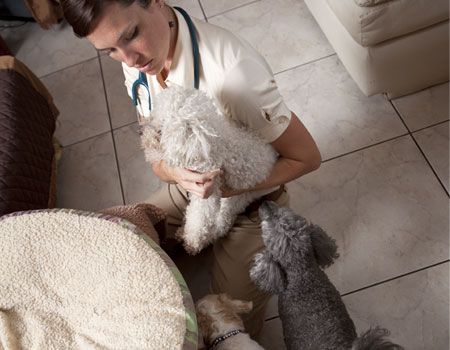
Dr. McVety begins the discussion about euthanasia with a client regarding her 17-year-old dog Powder. The dog suffers from age-related cognitive dysfunction, blindness, deafness and arthritis. Like many veterinarians, McVety believes euthanasia is a gift to end suffering when administered at the proper time. Her client, with McVety's counsel, decided it was the right time for Powder.

Dr. McVety administers an intramuscular injection to sedate Powder as a first medical step in the euthanasia. The dog’s owner extends a tearful goodbye.
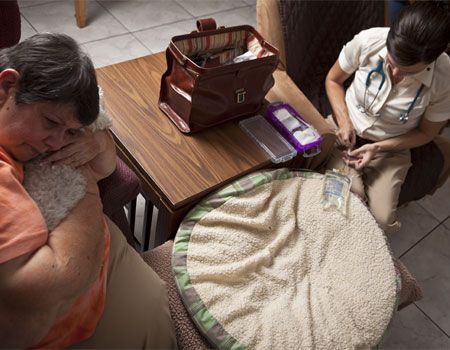
Allowing enough time to say goodbye is an important part of this procedure. Dr. McVety says that with the right education and outlook about dying, “(owners) can accompany their pet through the end-of-life experience with a peaceful transition.”

Here Dr. McVety prepares the euthanasia injections and flush prior to the procedure. McVety says that a peaceful, pain-free euthanasia is “the most important thing we (veterinarians) can do for patients.”
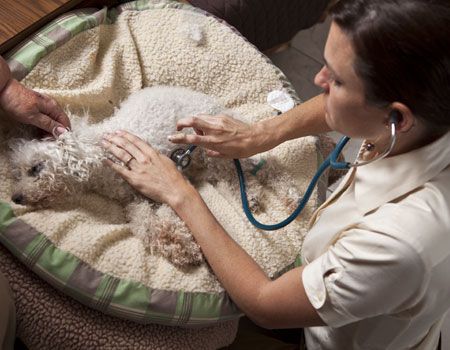
Powder has been euthanized, and the grieving process has already begun. Most pet owners express a sense of relief that their pet did not suffer. Other normal stages of grief can include: guilt, depression, denial, anger, bargaining and finally acceptance.

A clay footprint, McVety says, is both symbolic and important to honor the memory of the dog or cat.
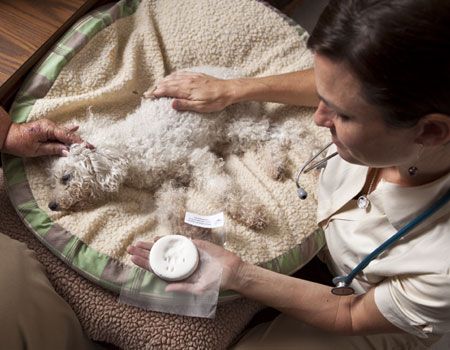
Dr. McVety presents the owner with Powder’s footprint. While euthanasia ranks as the most difficult decision for many clients, veterinarians play an important role in helping families cope with one of most difficult and emotional times in their lives. For children, the loss of a pet is oftentimes their first experience with death.
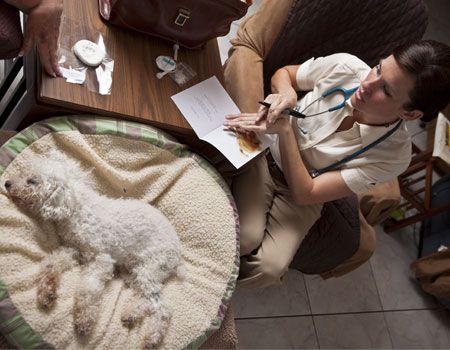
In this photo, Dr. McVety starts a remembrance booklet logging the pet’s name and date of passing. Notice that the only reminder of a medical procedure is a small shaved area on Powder’s leg. A small clipping of Powder’s fur has been saved in a plastic bag as a remembrance of the dog for the owner.

Powder is gently placed in a basket for transport to a crematory.

The other pets in the household need closure too, McVety says. She allows time during this procedure to let the other pets in the home say goodbye.